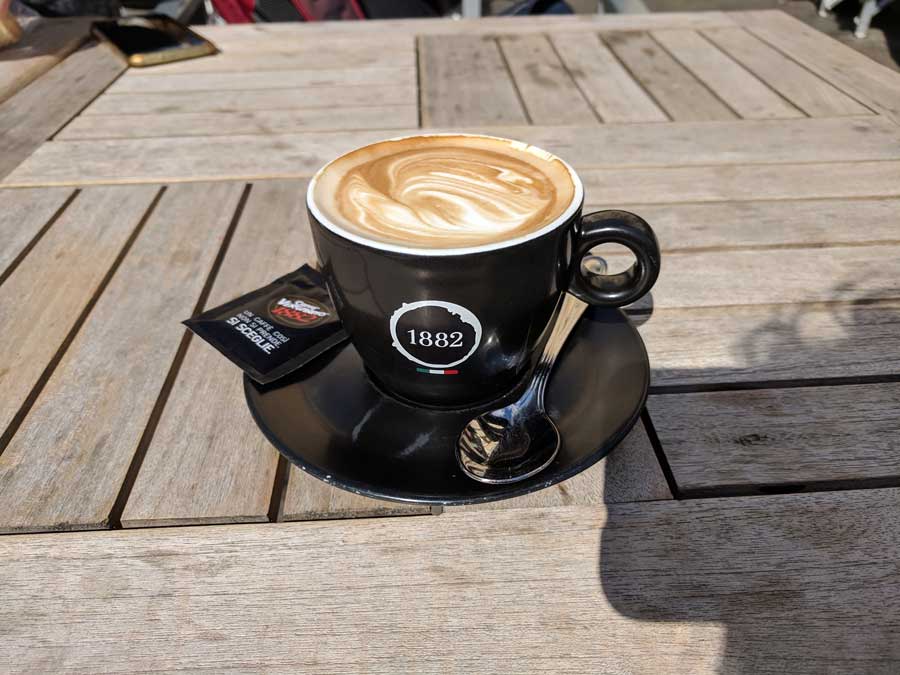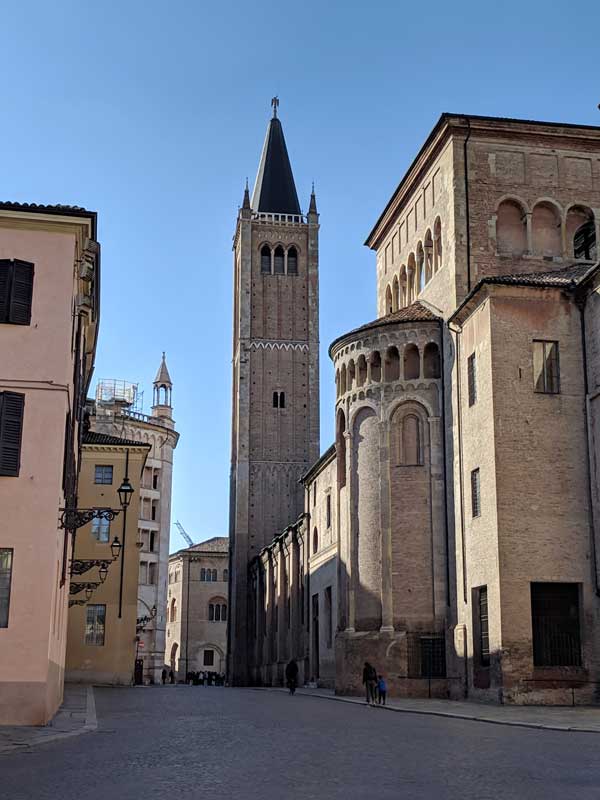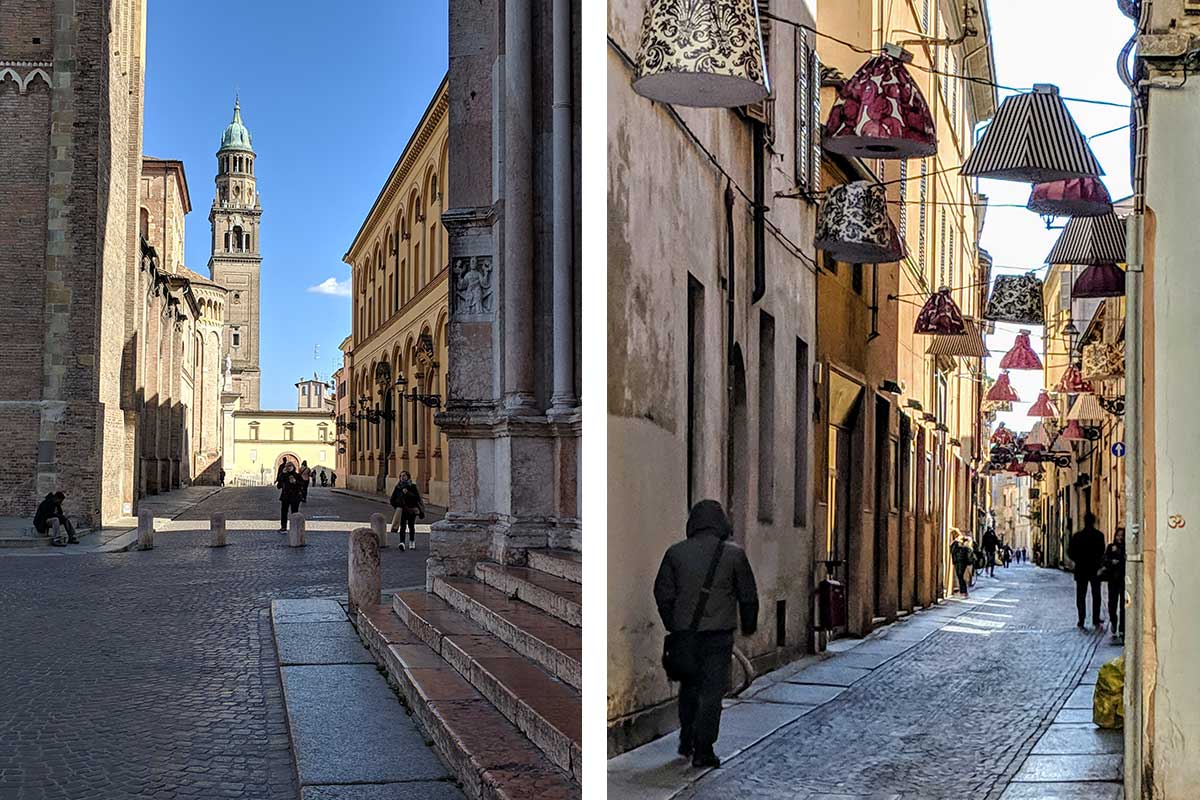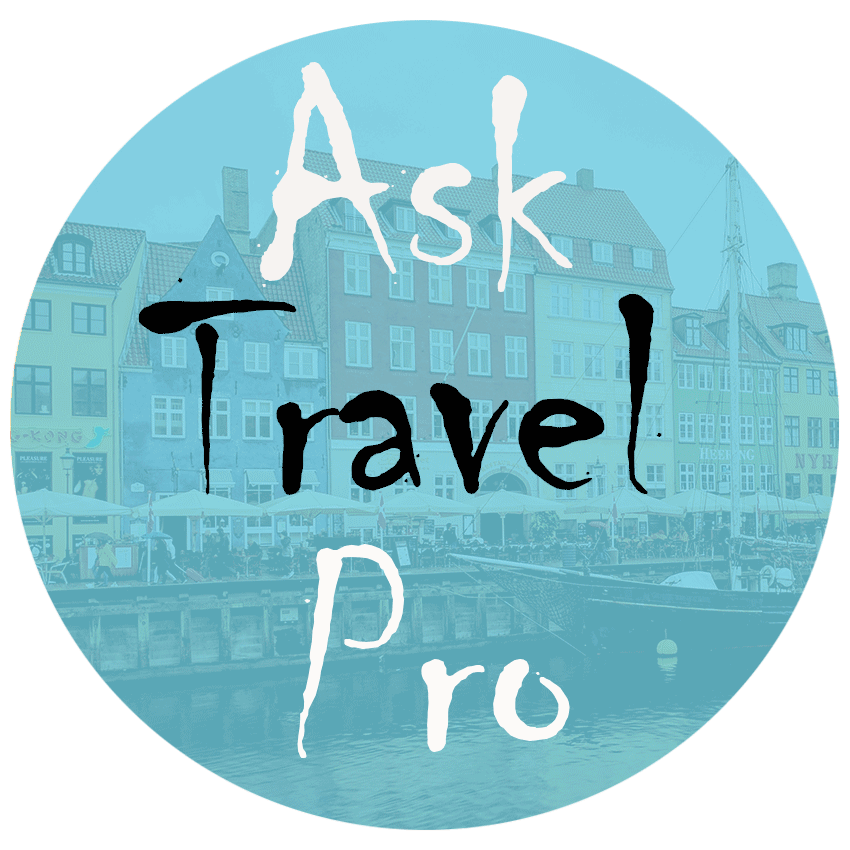When you hear the word "Parma", what comes to your mind first? Probably Parma cotta, which is a kind of cooked ham, or Parmesan cheese. Who wouldn't know this staple food item of all Italian restaurants? However, not so many people know that the small town of Parma in Northern Italy is also a home to the one of the oldest universities in Europe, founded in 10th century. The University of Parma is organized into nine departments and one of them (no surprise) is the faculty of food. So if you thought of hearty, tasty food in relation to Parma, you weren't far from the truth!
Founded by Romans around 183 b.c., Parma was destroyed in the 4th century by the king of Goths, Theodoric, during his conquest of the Italian peninsula. Then it was gradually rebuilt during the Middle Ages. As is the due course for places situated on major trade intersections, it changed hands many times through the ages: Romans, Papal government, Austria... Napoleon took it from Austria in 1815, and finally in 1861 Parma became part of Italy. Mind you, during the whole time the inhabitants of Parma were making prosciutto! That's what I call dedication and devotion!
On our way from Florence to Milan, the two days which we spent in Parma were a nice break from the typical museum rallies. There are a few farms around Parma that offer tourist accommodation through Airbnb and we happily took advantage this countryside hospitality. Who could resist freshly hand-baked buns and croissants for breakfast? Our host Silvia even offered us free bikes for riding on a nearby trail, but we had already arranged for a bike tour to a parmesan factory with Davide from BikeFoodStories.com
[Read more about the Parmesan factory tour]
Parma is definitely a foodie heaven! After visiting the parmesan factory our guide Davide, who, by the way, is a graduate from that same food faculty of Parma's University, took us through the atmospheric streets of the old city center to the "Salumeria" for prosciutto tasting.
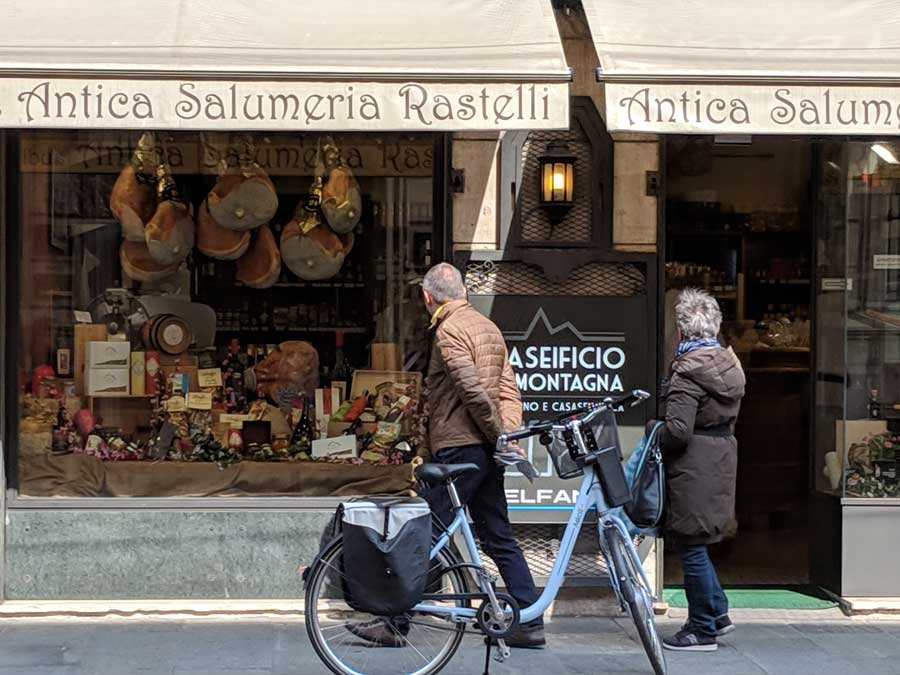
I had never considered before that, in fact, all prosciutto is not created equal. It used to be even more diverse in taste and quality, until in 1963 Parma ham producers came together and declared certain standards. They wanted "Parma prosciutto" to become the signature trademark in quality and taste. So they agreed on guidelines pretty similar to these of the Parmiggiano Reggiano cheese makers. In short, Prosciutto di Parma is produced from pork raised on the hills between the rivers Enza and Stirone, and at no higher an altitude than half a mile above sea level. I'm forced to wonder how the altitude affects the taste, but... we'll trust the professionals! Prosciutto is tied to Parmesan in many ways and one of them is that pigs are fed largely on whey from Parmesan production.
And speaking of traditions: Did you know that the tradition of making prosciutto in this region dates way back to the Roman era? And the technology used today is still very similar to how it was back then.
Of course, any salumeria has not only prosciutto, but many other delicious foods. Do not miss them! Sitting at the tasting table made of a huge wooden barrel, I thought of a picnic. Here, in this little shop, one could get all that is needed for a simple and hearty picnic meal: bread, wine, cheese and dozens of various meat products.
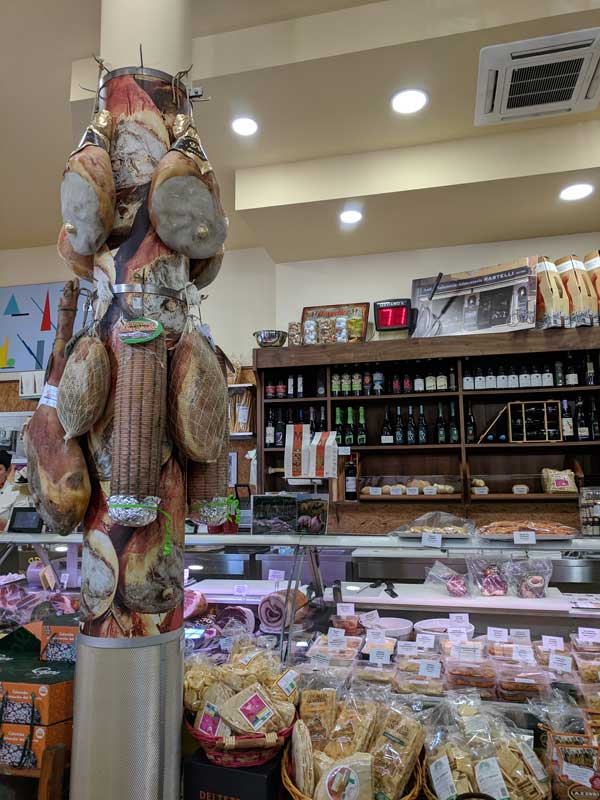



All charged up, we mounted our bikes (not without effort) and went pedaling through the city, ready to discover its secrets. Parma's center is quite compact and not very crowded, so in many places we enjoyed uninterrupted views of old palaces, towers, and churches.

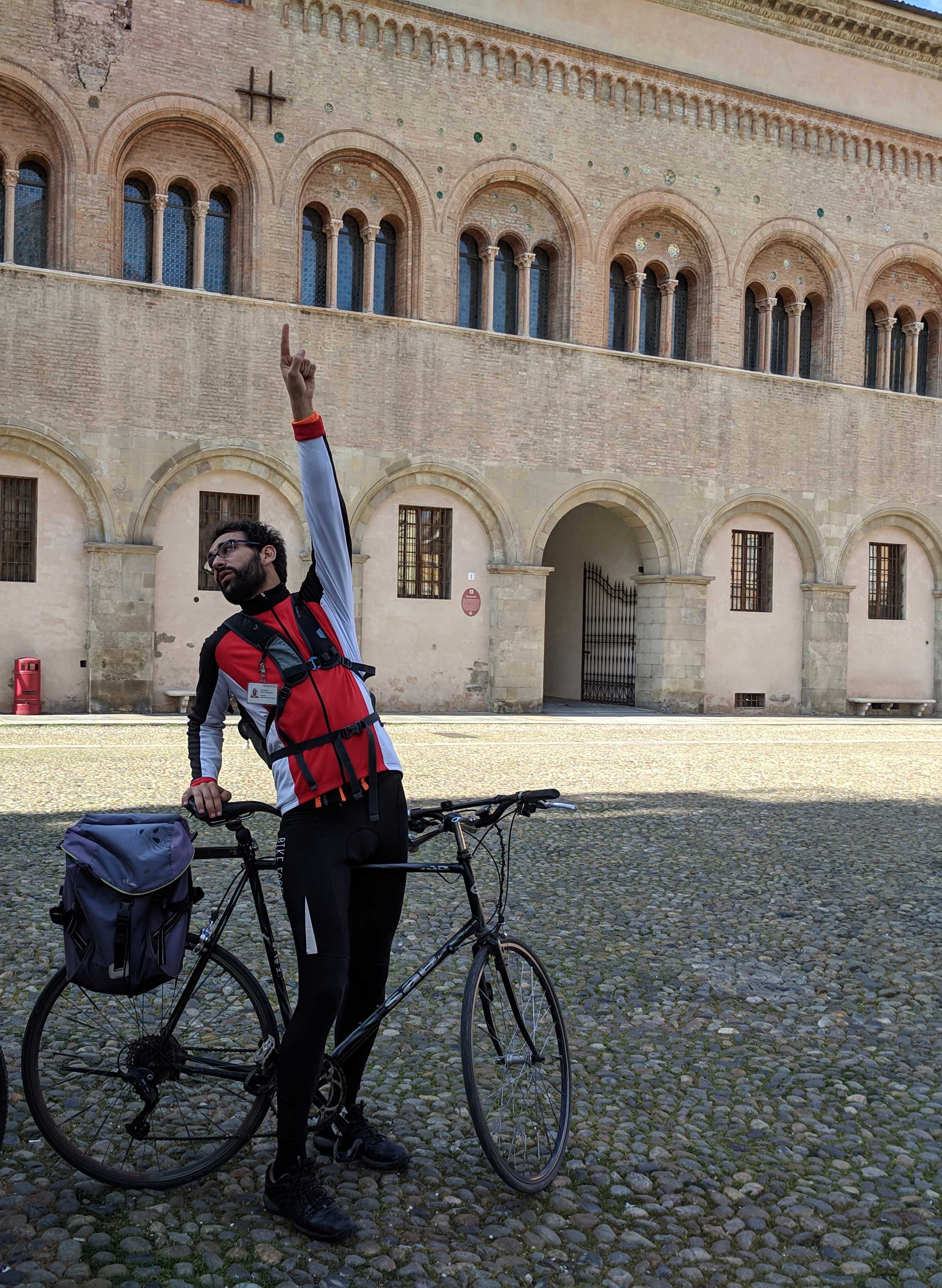
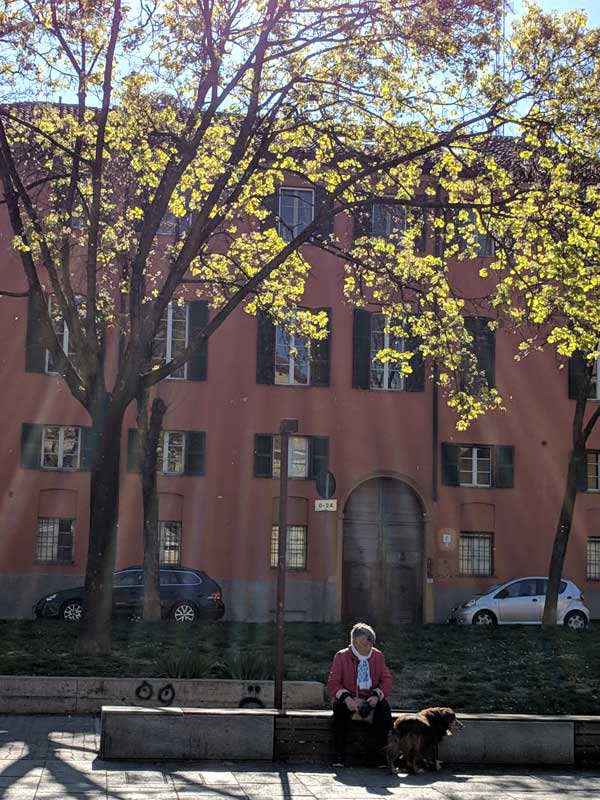

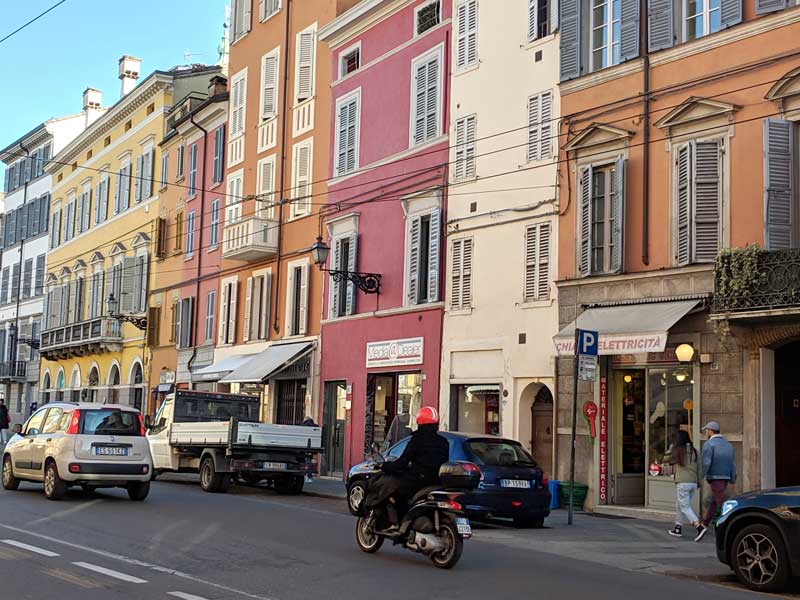
We stopped by a small gelateria for a quick refreshment and... the gelato was heavenly! We ended up visiting it for a second time just an hour later!

Did I mention taking a break from museums in the beginning about? Well, that doesn't mean that we came to Parma only for the food. There was a deal that we couldn't resist and we were only happy about it. As we were passing by another statue of Guiseppe Verdi (I say "another" because Italians obviously love Verdi and there is at least one statue of him in every city we've visited during our week-long trip), we saw the sign "Casa del Suono".
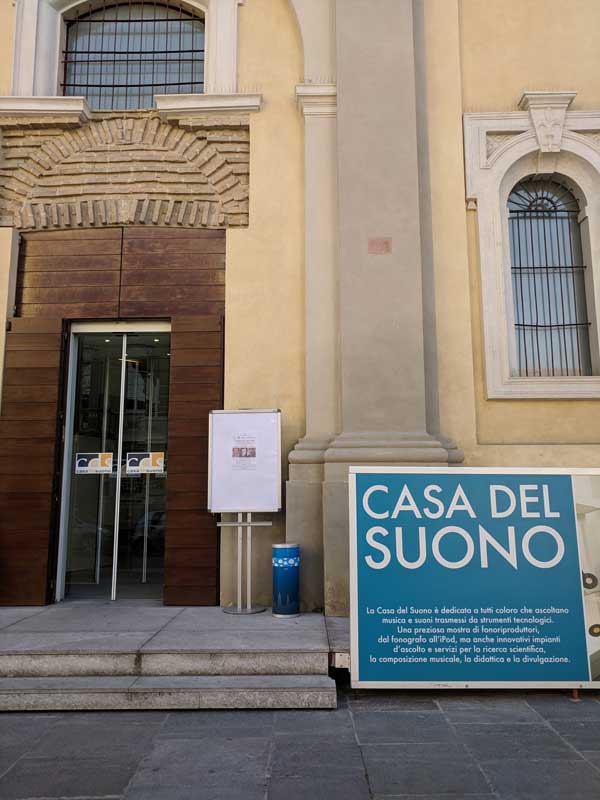


Of course we went inside, and found out that it is, in fact, the "Museum of sounds". After getting a free ticket (yes, admission is free), we strolled through a very nice exhibition of audio instruments representing the history and evolution of sound-producing technology situated in the building of 17th century church. Beautiful shiny gramophones, cute old radios and tape recorders, and mechanical music machines were all fun to look at and listen to. As a very pleasant surprise, we experienced the "sonic chandelier". It consists of 228 speakers playing 64 channels, so that when you stand in the middle of this construction and listen to the opera, you feel as though you are in the middle of the best opera house in the world!
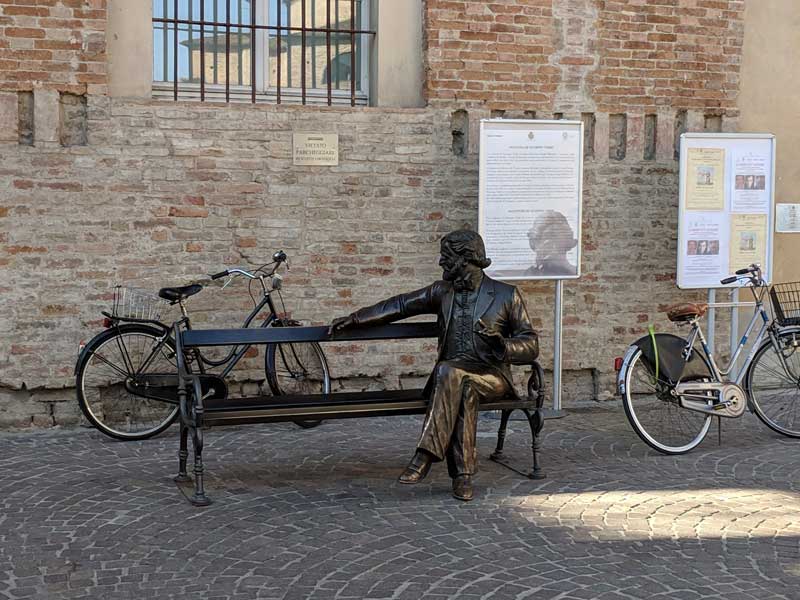
When talking about Parma, it's impossible not to mention the Piazza Garibaldi, with its vertical sundial clock built in 1829 and couple of cozy cafes right on the square. This is where the locals like to meet up. As we were told, this phrase is quite common in Parma: "Meet you at the Garibaldi!"
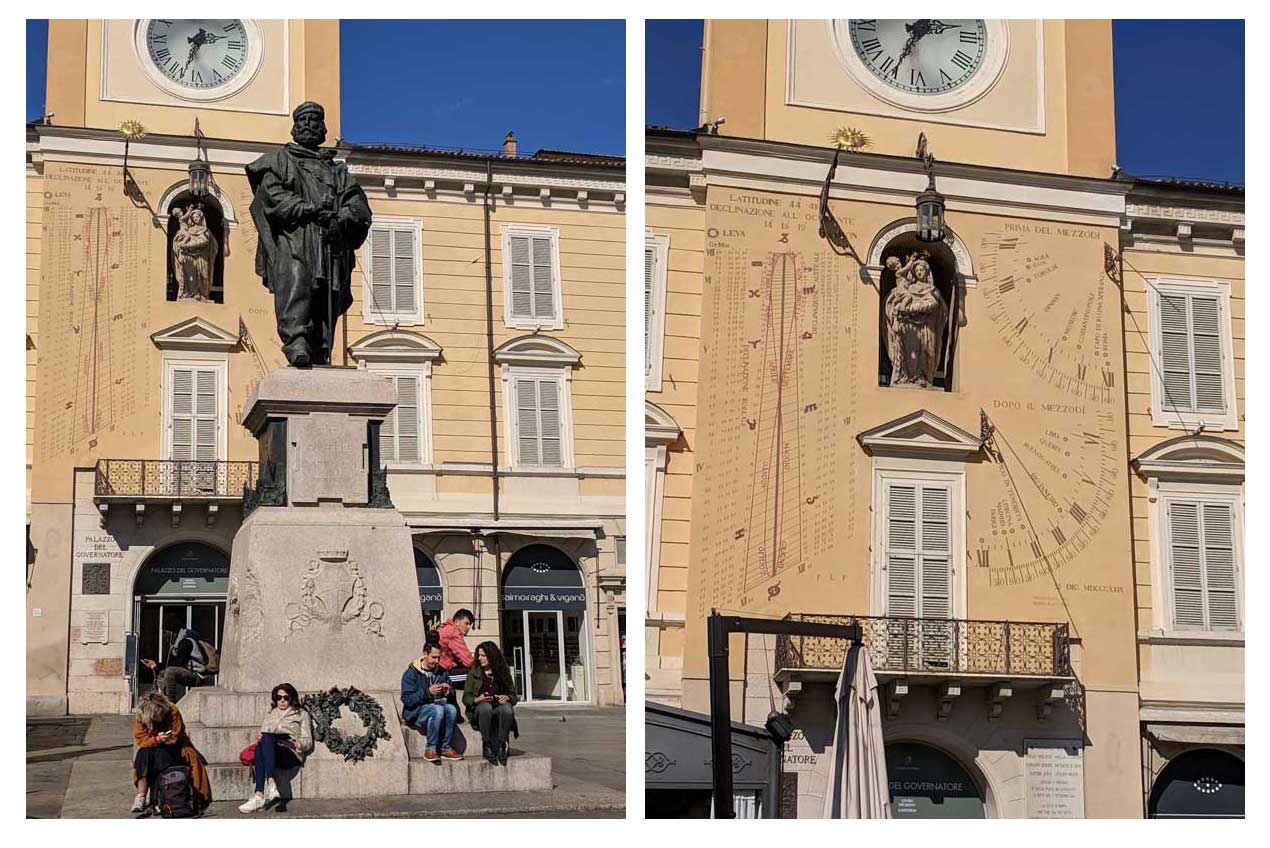
Parma definitely has a lot to offer for a one-day visit, including the Duomo (main cathedral) built during the 11-12th centuries, Saint Nectarius Orthodox Church (very interesting decorations inside), and the Museo Lombardi with a nice collection of 19th century dresses, furniture and porcelain. If you are not one for museums - hop on a bike or just walk around the charismatic narrow streets, visit the small shops, indulge in mouthwatering desserts or taste the local wine, cheese and prosciutto!
